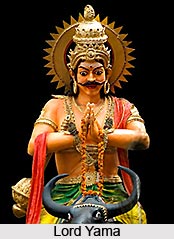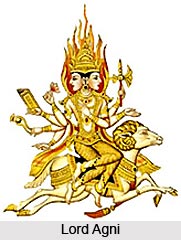 Legends of Creation are found abundantly in the Brahmanas. These legends deal with the origin of matter. The creation legends belong to the larger group of the various legends of origin designated as the Puranas. Among these narratives, many were only invented by the Brahmana theologians, while others date back to old, popular myths and legends, or at least are founded upon a tradition independent of the sacrificial science. In the majority of the legends, Prajapati is indeed the only Creator, from whom the world and beings derive their origin. But, already in the Brahmanas, there are places where Prajapati himself is regarded as created, and the creation begins with the primeval water or with the non-existing or with the Brahman. It is a point to note that in the Brahmanas, and in the Vedas generally, there is no one Indian creation legend which is generally recognised. On the contrary, there are a great number of creation legends, containing the most diversified ideas and speculations, which cannot be made to harmonize with one other at all.
Legends of Creation are found abundantly in the Brahmanas. These legends deal with the origin of matter. The creation legends belong to the larger group of the various legends of origin designated as the Puranas. Among these narratives, many were only invented by the Brahmana theologians, while others date back to old, popular myths and legends, or at least are founded upon a tradition independent of the sacrificial science. In the majority of the legends, Prajapati is indeed the only Creator, from whom the world and beings derive their origin. But, already in the Brahmanas, there are places where Prajapati himself is regarded as created, and the creation begins with the primeval water or with the non-existing or with the Brahman. It is a point to note that in the Brahmanas, and in the Vedas generally, there is no one Indian creation legend which is generally recognised. On the contrary, there are a great number of creation legends, containing the most diversified ideas and speculations, which cannot be made to harmonize with one other at all.
Two of the most interesting tales of creation are those of the creation of the night and of the winged mountains. As regards the tale of the creation of the night, after the death of Lord Yama his sister Yami was unable to forget him. The gods tried to persuade Yami to forget him. However, whenever they asked her to forget him she replied, "Only today he has died". The Gods realised that she would never be able to forget him and decide to create night, for at that time there was only day and no night. There thus arose a new day and she forgot him. The tale regarding the winged mountains is that the oldest children of Prajapati were the hills, and they were winged. They flew away and settled down just where they wished. But at that time the earth still swayed to and fro. Then Indra cut off the wings of the hills and made the earth fast with them. But the wings became storm-clouds. Therefore these clouds always hover in the direction of the mountains.
 The origin of the four castes is frequently related in the Brahmanas. Already in one of the philosophical hymns of the Rig Veda, the Purusasukta, it is reported how the Brahmin arose out of the mouth, the warrior out of the arms, the Vaishya out of the thighs and the Sudras out of the feet of the Purusa sacrificed by the gods. In the Brahmanas it is Prajapati who produced out of his mouth the Brahmin together with the God Agni, out of his breast and his two arms the warrior as well as Indra, out of the middle of his body the Vaishya but out of his feet the Sudras. With the Sudra no deity was created, and therefore he is incapable for sacrifice. In consequence of this kind of origin the Brahmin performs his work with his mouth, the warrior with his arms, the Vaishya does not perish, however much he is "consumed," i.e. exploited, by priests and warriors, for he is created out of the middle of the body, where the reproductive power reposes. Of religious ceremonies, the Sudra can perform only the foot-washing of members of the higher castes, for he arose out of the feet.
The origin of the four castes is frequently related in the Brahmanas. Already in one of the philosophical hymns of the Rig Veda, the Purusasukta, it is reported how the Brahmin arose out of the mouth, the warrior out of the arms, the Vaishya out of the thighs and the Sudras out of the feet of the Purusa sacrificed by the gods. In the Brahmanas it is Prajapati who produced out of his mouth the Brahmin together with the God Agni, out of his breast and his two arms the warrior as well as Indra, out of the middle of his body the Vaishya but out of his feet the Sudras. With the Sudra no deity was created, and therefore he is incapable for sacrifice. In consequence of this kind of origin the Brahmin performs his work with his mouth, the warrior with his arms, the Vaishya does not perish, however much he is "consumed," i.e. exploited, by priests and warriors, for he is created out of the middle of the body, where the reproductive power reposes. Of religious ceremonies, the Sudra can perform only the foot-washing of members of the higher castes, for he arose out of the feet.
Thus discussed above is a brief outline of the various tales of creation contained among the narratives of the Brahmanas.



















